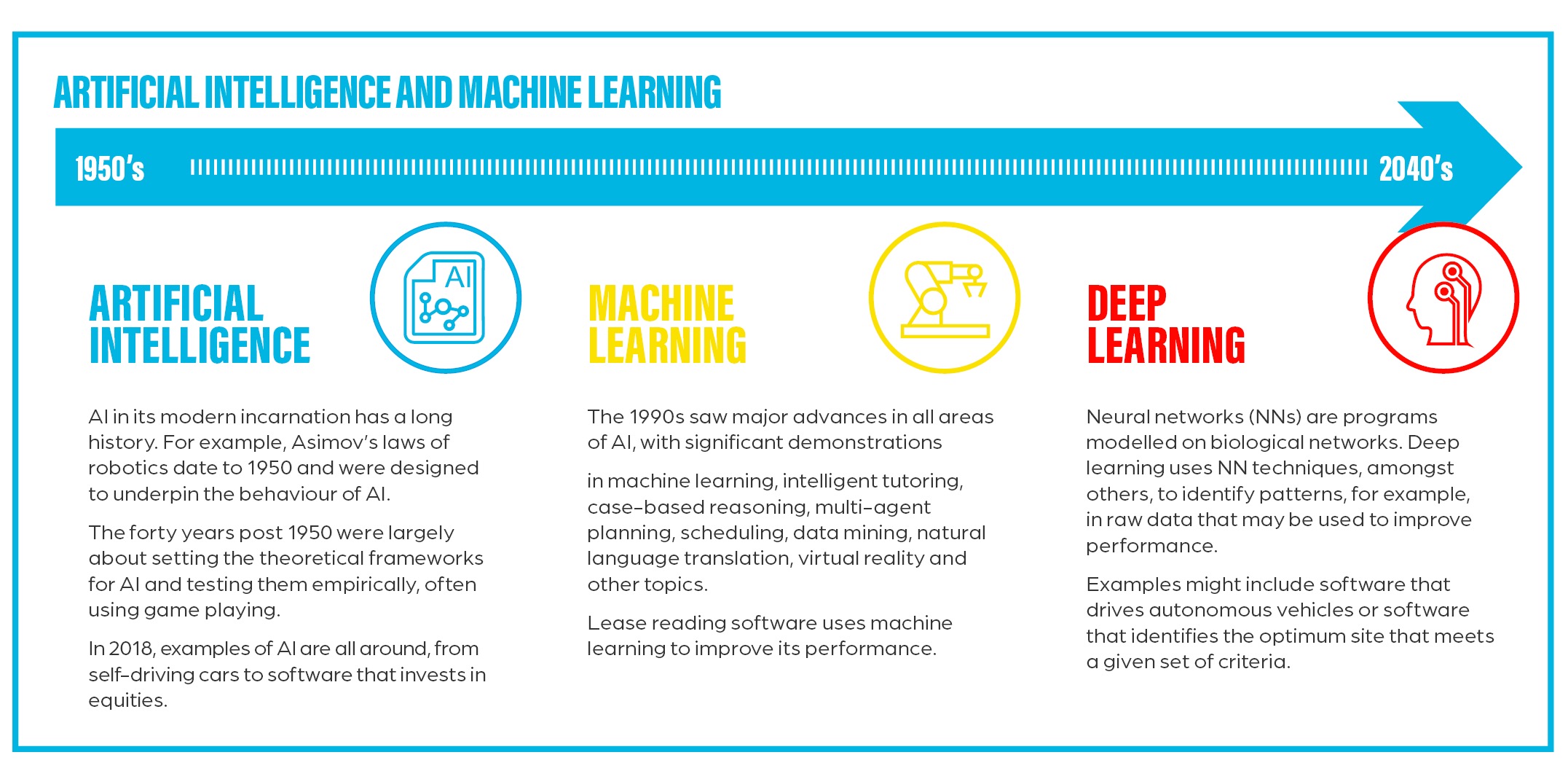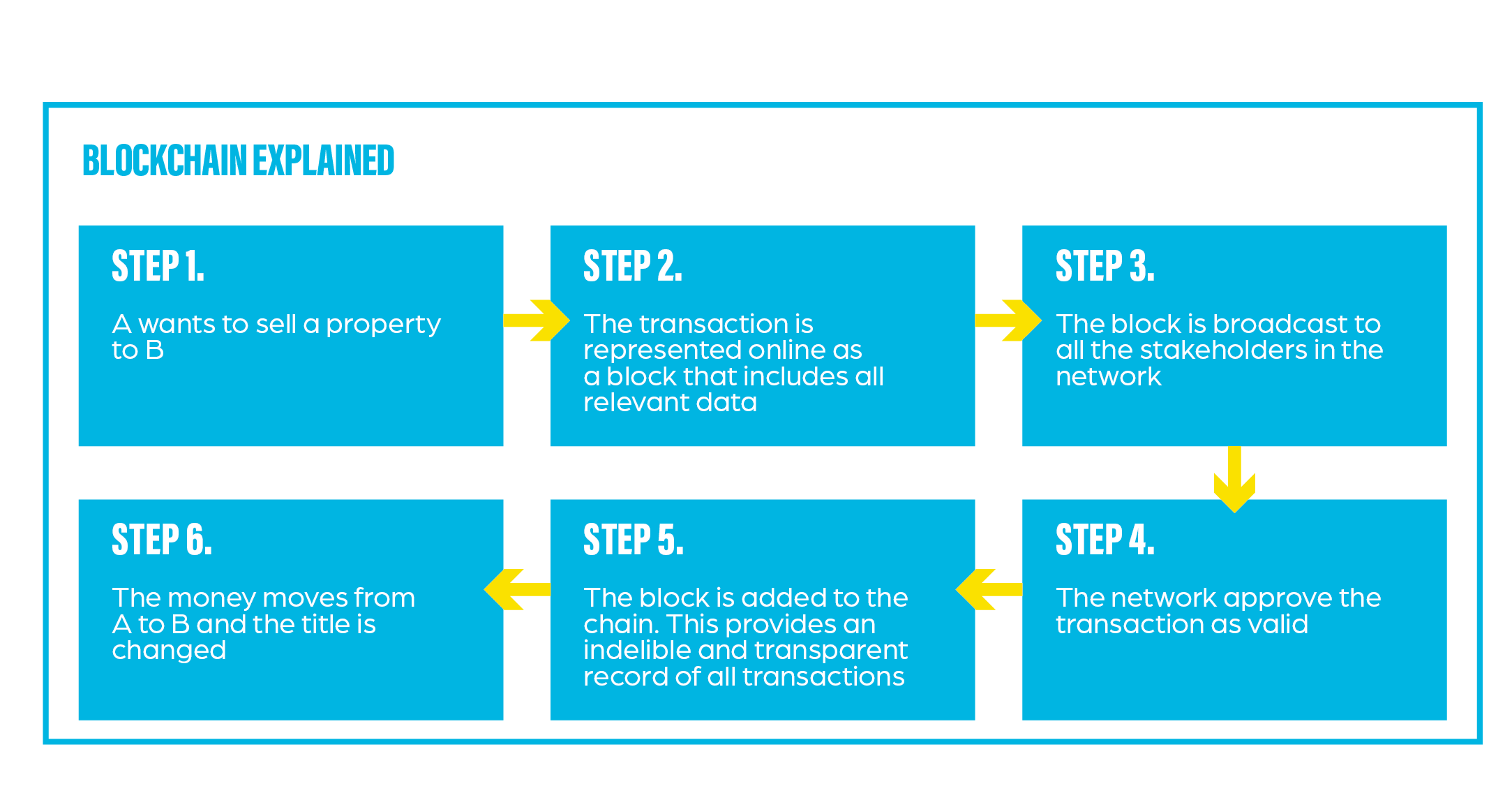Continuing our series on the fourth industrial revolution, this week’s focus is on the technology behind it that will enable us to automate key processes in the planning and development lifecycle. Given developments in these technologies over the last two years, that opportunity may arrive much sooner than we anticipate!
We highlight four key technologies with the ability to drive changes in the way we do planning and development. The application of these technologies to the planning and development lifecycle will be explored later in the series.
1. Artificial Intelligence and Machine Learning
Artificial intelligence (AI) systems demonstrate one or more of the following behaviours, more commonly associated with human intelligence: problem solving, learning, reasoning, planning, manipulation and perception. In some cases, AI systems may also display social intelligence and creativity. AI is demonstrating potential to:
- Improve forecasting and sourcing;
- Optimise and automate operations;
- Develop targeted marketing and pricing; and
- Enhance the user experience.
But machine learning is just one approach to achieving AI. In its simplest form, it is a system that is programmed to learn from events and data. Such systems work on probability – data feeds in and the system makes a statement on decisions or predictions with a degree of certainty.
The addition of a feedback loop enables ‘learning’ – by sensing or being told whether its decisions are right or wrong, it modifies its approach. Machine learning is already embedded in day-to-day products such as Siri and Alexa that are in use daily. Nest, the learning thermostat acquired by Google in 2014, uses behavioural algorithms to learn from heating and cooling needs, anticipating and adjusting the temperature based on personal requirements.

2. Blockchain
Blockchain, originally developed as the backbone for cryptocurrency Bitcoin, is a distributed ledger that removes the need for a central authority. It acts as a ‘trustless’ network, in the sense that as a user you know that something IS true, rather than relying on a ‘trusted intermediary’ like a bank to tell you it is. This means that even parties that are unknown to each other can trade an asset, secure in the knowledge that the transaction can be trusted. For us, distributed ledger technology has the potential to provide new ways of assuring ownership and provenance for goods and real estate.

3. Internet of Things
The internet of things (IoT) network consists of sensors, actuators (e.g. switches), and network connectivity that enables objects to connect and exchange data. IoT devices can be used to monitor and control the systems used in buildings, in home automation and building management systems giving a complete view of a building in real time. IoT networks enable buildings to communicate in real time, constantly appraising the assets current state, thus allowing for predictive and prescriptive, rather than only planned maintenance. The built environment should be able to be operated far more effectively and efficiently if supported by IoT networks.
4. 5G communications
5G is the next iteration of wireless data communications, ensuring seamless connectivity, providing ultra-fast, reliable, high capacity transmission. It will support the ever-larger data requirements of existing networks and new applications, from connected vehicles to the Internet of Things. The implication of 5G for real estate, and in particular the mass of data involved in planning and development, is that it facilitates a general presumption of mobility – anything can be done anywhere.
This technology is already being introduced in the retail sector. The Square in Camberley, managed by our asset and property management team for Surrey Heath Borough Council, is the first of its kind in the UK to introduce a fully 5G-enabled shopping centre, opening the door to the creation of new spaces and experiences for both shoppers and retailers. We’re watching with interest to see how these plans take shape.

Look out for our next feature where we’ll look at identifying development opportunities through the use of data and automated site finding techniques.


/Passle/5c9a06f6989b6e10ec2d3265/MediaLibrary/Images/2024-04-19-09-36-48-517-66223b30d15f73709e80efe1.jpg)